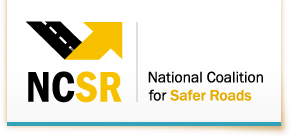Traffic crashes kill tens of thousands of people and injure millions more every year in the United States. These tragic events lead to substantial financial costs on loved ones burdened with emotional loss and on the businesses, governments and insurers that make up the larger community.
The economic impact of an injury or fatal crash cannot compare to the human grief involved. However it is useful in measuring how one tragedy affects an entire community on the financial level. Used by the National Highway Traffic Safety Administration, the societal perspective provides the best measure of the economic impact from traffic crashes because it captures the full scope of costs – to victims, families, government, insurers and taxpayers. Of these costs, 50 percent is paid by private insurers.
The cost to the community when a fatal traffic collision occurs is on the rise. Following an 87% increase from $3.2 million in 2005 to $6 million in 2009, the cost continues to climb reaching an estimated $6.1 million in 2010 and $6.4 million in 2012. This results in a 100 percent increase from 2005 when adjusted for inflation.
Injury crash costs are on the same upward trend. The community’s cost of an injury crash is up 85 percent from $68,170 in 2005 to $126,000 in 2009. With inflation factored in, the cost rises to $128,066 in 2010 and $134,555 in 2012, a 97 percent increase from 2005.
It is relevant to note that costs resulting from a collision are rising at a time when the number of fatal and injury crashes are on the decline. Costs would have been much higher had fatal crashes not declined 24 percent from 2005 to 2010, or had injury crashes not decreased 17 percent over the same time period. AAA attributes the decline in crashes in part to additional safety measures taken by states, regions and localities.
Red-light and speed safety cameras are technologies among those safety measures that have helped to improve road safety. In the past decade, hundreds of communities have reduced crashes through the use of red-light safety cameras alone. As the number of communities using cameras grew from 25 in 2000 to 501 in 2010, cities experienced a decrease in red-light running violations and as a result, fewer traffic-related fatalities.
A recent study by the Insurance Institute for Highway Safety (IIHS) found fatalities fell by 24 percent in 14 of the largest U.S. cities using red-light safety cameras. Another 2011 study, conducted by the Texas Transportation Institute, found intersections with red-light safety cameras witnessed a 32 percent reduction in right-angle crashes and a 25 percent decrease in red-light running related crashes.
Speed safety cameras are also effective in making roadways safer by slowing drivers down. Average speeds fell 9 mph while speed cameras were in place on a busy urban freeway in Scottsdale, Arizona. A seemingly insignificant 1 percent reduction in the average free-flow speed on a road system will yield a 4 percent reduction in traffic accident fatalities. In other words, a 1 mph reduction would save 1,100 lives annually. Speeding now causes more roadway fatalities than drunk driving, making it the leading cause of motor vehicle related deaths.
The insurance industry stands to benefit greatly by expanded road safety efforts within communities. Losses in the auto insurance industry for private passenger liability rose 12 percent to $64.1 billion in 2010 from $57.1 billion in 2005, according to the Insurance Information Institute.
What did traffic accidents cost society and insurers in 2010? Based on the most recent crash data available, in 2010:
- There were 2.24 million injury crashes with a total cost of $286 billion to communities
- Each day, traffic crashes injured 6,136 people on average and cost communities $785 million
- Insurers paid $392 million per day for traffic crash injuries
- 32,885 traffic fatalities were reported for a societal cost of $200 billion
- On average, 90 traffic fatalities occurred each day, at a daily cost of $548 million
- The total daily cost to insurers amounts to $274 million
If red-light and speed safety cameras contribute a combined 25 percent reduction in fatalities alone, the impact on the insurance industry as a whole would be significant:
- A 25 percent reduction in the 10,395 speed-related deaths in 2010 would save 2,598 lives and $7.92 billion in insurer expenses
- A similar reduction to the 673 people killed in red-light running crashes in 2010 would save 169 lives and $515 million in expenses to insurers
- An estimated 122,000 people were injured in red-light running crashes in 2010. A 25 percent reduction would prevent 30,500 people from injuries and save insurers $1.95 billion
There is no doubt that communities and insurance companies stand to gain cost-saving benefits from traffic fatality and injury reductions resulting from red-light and speed safety cameras. More importantly, the person whose life is saved is the greatest beneficiary in every case.
For additional information on cost-saving benefits of traffic safety cameras click here and enter your city and state.
NCSR was organized as an industry trade association with the express purpose of advocating on behalf of the traffic safety technology industry. NCSR is proud to advocate for the use of red light safety cameras in more than 600 communities across the country to change reckless driver behavior, stop red-light running and save lives. NCSR is supported by American Traffic Solutions, with coalition partners including the National Safety Council; Safe Kids USA; Child Safety Network; National Organizations for Youth Safety; America Walks; and Red Means Stop, as well as numerous police departments, medical professionals, safety advocates, industry leaders, community leaders and concerned citizens. View NCSR Partners. For more information, visit http://www.NCSRsafety.org/, follow @SaferRoadsUSA on Twitter and on Facebook at http://www.facebook.com/SaferRoadsUSA.

